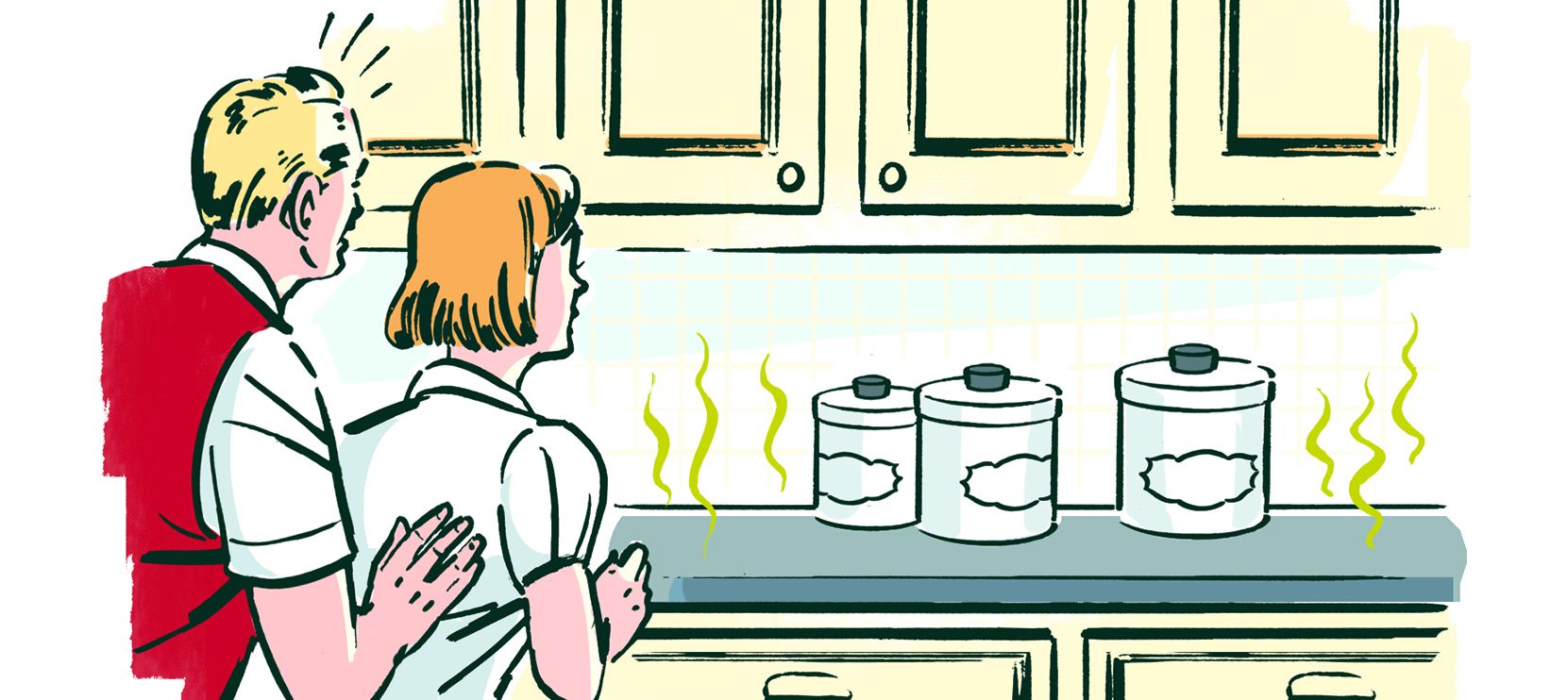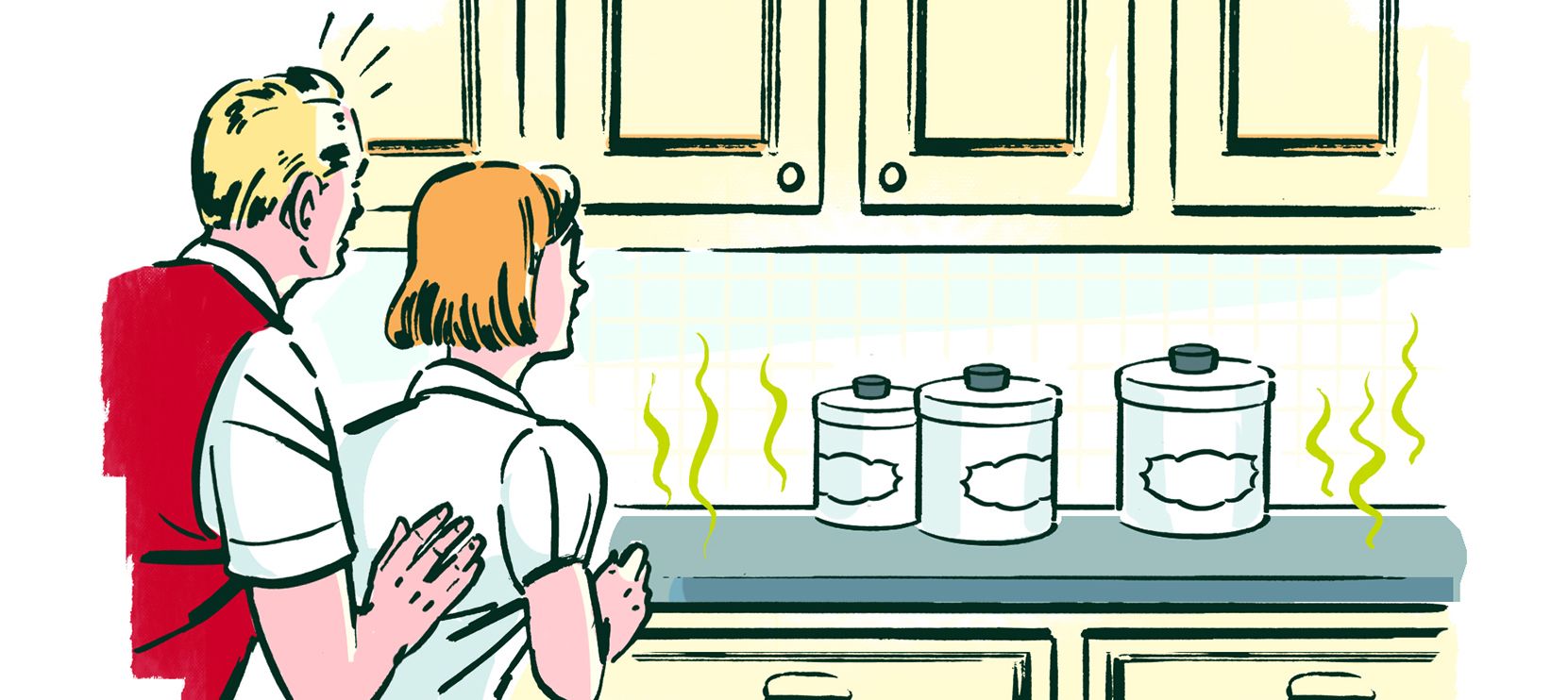
Granite countertops have been a popular choice for kitchens and bathrooms for decades thanks to their durability and style. However, some homeowners have concerns about the potential for radon emission from these natural stone surfaces.
The short answer is no, granite countertops do not generally emit enough radon gas to be a concern. But there are steps you can take to reduce your risk. In this comprehensive guide, we’ll explore the facts behind granite countertops and radon, helping you understand the risks and make informed decisions for your home.
What Is Radon and Why Is It Concerning?
Radon is a colorless, odorless, and tasteless radioactive gas that occurs naturally in the environment. It’s produced by the breakdown of uranium in soil, rock, and water. Radon becomes a health concern when it accumulates in enclosed spaces, such as homes, where it can be inhaled over long periods.
The primary health risk associated with radon exposure is an increased chance of developing lung cancer. According to the Environmental Protection Agency (EPA), radon is the second leading cause of lung cancer in the U.S., responsible for about 21,000 lung cancer deaths each year.
In the late 2000s, media reports began to highlight the potential radon risks of granite, suggesting that some granite countertops could emit dangerous levels of radon.
The reports cited instances where some granite countertops were found to emit radon at levels exceeding the EPA’s safety limit of 4 picocuries per liter of air. This sparked a debate within the scientific community and the stone industry about the actual risks posed by granite countertops.
Scientific Research on Granite and Radon Emissions
Some studies have found that certain types of granite can give off low levels of radon. Research conducted by geologists and environmental scientists has shown that granite, a natural stone, can contain trace amounts of uranium and other radioactive elements. These elements can decay over time, potentially releasing radon gas.
However, it’s important to note that the amount of radon emitted by most granite countertops is typically very low and not considered a significant health risk compared to other sources of radon in homes.
The majority of scientific research suggests that granite countertops do not pose a significant radon risk in homes. A comprehensive study by the Marble Institute of America found that the average radon emissions from granite countertops were well below the EPA’s action level for indoor air.
“Very few granite countertops pose a real threat,” says Bill Brodhead, president of WPB Enterprises, a Pennsylvania radon mitigation company. The EPA also concluded that there isn’t enough evidence to suggest granite countertops are a significant source of radon after reviewing test data submitted by manufacturers.
Comparing Radon Levels: Granite vs. Other Sources
Comparing radon emissions from granite countertops to other sources can help put the risk in perspective.
Natural Ground Radon
The primary source of radon in most homes is the ground beneath the house. Radon naturally occurs in soil and rock and can seep into homes through cracks in foundations, floors, and walls. This ground-based radon is typically the most significant contributor to indoor radon levels.
Building Materials and Radon
While granite countertops have been a focus of concern, other building materials can also contribute to indoor radon levels. Concrete, brick, and gypsum board can contain small amounts of naturally occurring radioactive materials. However, like granite, these materials generally do not release radon in amounts that pose a significant health risk.
Factors Affecting Radon Emissions in Granite
The potential for radon emissions can vary depending on the type and origin of the granite. Granites from different quarries around the world have varying compositions of minerals and trace elements. Some types of granite may contain higher levels of uranium and other radioactive elements, potentially leading to higher radon emissions.
The size and thickness of a granite slab can influence its potential radon emissions. Larger and thicker slabs may have a greater volume of stone, which could theoretically contain more radioactive elements. However, the surface area exposed to the air also influences how much radon can be released into the environment.
Testing for Radon in Your Home
Testing for radon is an essential step in protecting your health. Home radon testing kits are readily available and provide an affordable way to check radon levels in your home. These kits typically cost around $146, according to Angi, and can be found at hardware stores or online. They usually involve placing a small device in your home for a specified period and then sending it to a lab for analysis.
For more accurate and comprehensive results, homeowners can opt for professional radon testing, which costs about $715, per Angi. Certified radon measurement professionals use sophisticated equipment to provide detailed analysis of radon levels throughout the home. This option is recommended if initial DIY tests show elevated radon levels or if you’re buying or selling a home.
Radon Mitigation Strategies for Homeowners
There are several effective strategies for reducing radon levels in homes.
One of the most effective ways to reduce radon levels in a home is to improve ventilation. This can involve installing ventilation systems that draw radon-tainted air from beneath the house and blow it outside. Proper ventilation not only helps with radon but can also improve indoor air quality.
Sealing Cracks and Gaps
Sealing cracks and gaps in your home’s foundation, walls, and floors can help prevent radon from leaking inside. This technique is often used in conjunction with other mitigation techniques, as sealing alone is not typically sufficient to significantly reduce radon levels.
Sub-Slab Depressurization
Sub-slab depressurization systems can be highly effective in reducing radon levels in homes. These systems use pipes and fans to draw radon from beneath the slab and vent it outside. This method is often recommended for homes with high radon levels and provides a long-term solution to radon mitigation.
Alternatives to Granite Countertops
Exploring alternatives to granite countertops can address concerns about radon emissions.
Quartz Countertops
Quartz countertops are a popular alternative to granite. They are engineered stone products made from ground quartz mixed with resins and pigments. Quartz countertops do not emit radon and offer a similar durability and look as granite.
Other Natural Stone Options
Other natural stone options such as marble, soapstone, and slate can be alternatives to granite. While these materials may contain trace amounts of radioactive elements, their potential for radon emissions is generally considered negligible.
Solid Surface Countertops
Solid-surface countertops, such as those made from acrylic or polyester resins, do not emit radon. They are also durable and come in a variety of colors and patterns, making them an attractive option for homeowners.
Our Conclusion
While concerns about radon emissions from granite countertops have been raised, scientific evidence suggests that the risk is minimal for most homeowners. The primary source of radon in homes is typically the ground beneath the structure, not countertops or other building materials.
If you’re concerned about radon in your home, the best course of action is to conduct a comprehensive radon test of your entire living space. This will give you a clear picture of your home’s radon levels and help you determine if any mitigation steps are necessary. Remember, maintaining good indoor air quality involves considering multiple factors, and granite countertops are just one small piece of the puzzle.

